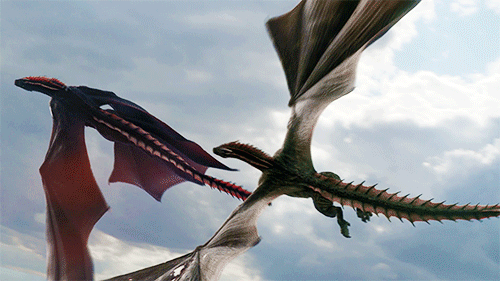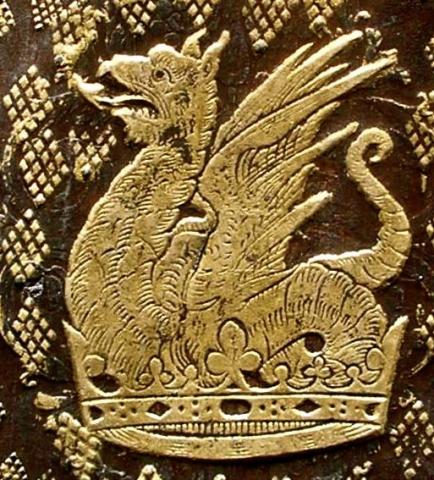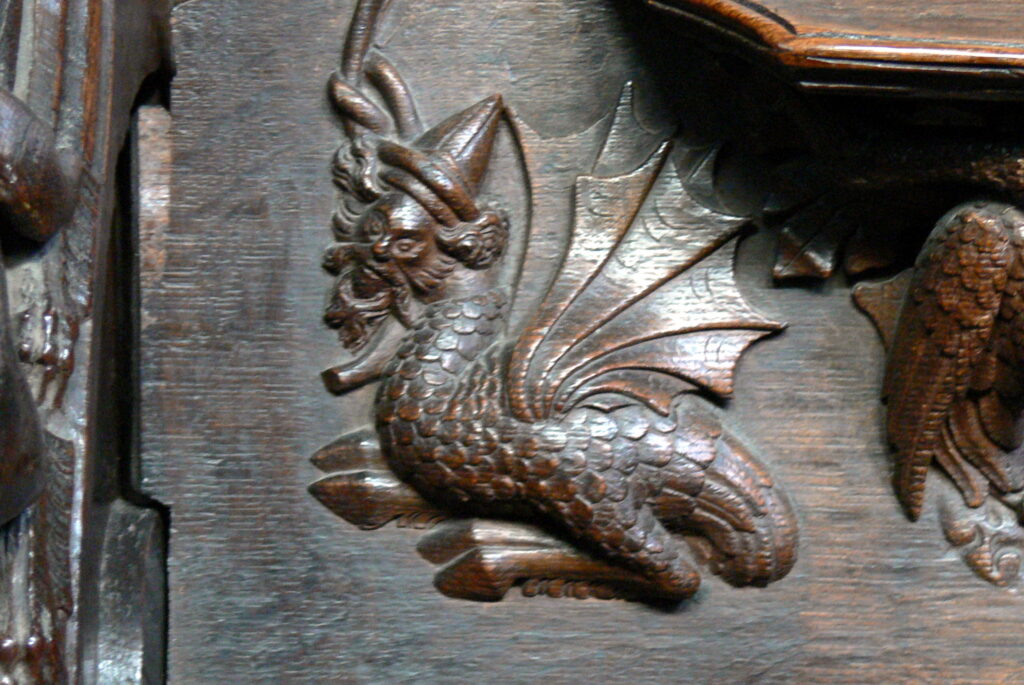Folklore Fact – Wyverns
Another month, another folklore fact! Wyverns handily won the poll over on my Patreon this month (be sure to take a look if you’d like to vote in the next one or even suggest all new subjects!)…

(nearly all modern dragon designs seen in visual media, especially film and television but now quite often also video games, count as the traditional British heraldic classification of wyverns, really; see my post here for a discussion of that, although I could expand that post today and discuss things like Monster Hunter, etc, which I didn’t really know much about at the time, and even further discuss some of the subjects already therein… Anyway, maybe I’ll revise that sometime in the future and improve it)
Wyverns are often described as a dragon with two hind legs, two wings, no forelegs, and a barbed tail. There are varieties, of course; some say the wyvern has the head of a dragon, the legs of an eagle, and a barbed “serpent tail” or simply a long tail with no barb. There are many varieties. Traditionally, at least if you ask English heraldry, the requirement to be a wyvern is that it has no forelegs – unlike the dragon, which has four legs in addition to wings. However, this is a technicality that was obviously not always applied elsewhere, including the European mainland. More on that shortly.
The word “wyvern” is not in itself all that old; it originated around 1600, derived from “wyver” from 1300, so the term is not ancient. Like dragon, it essentially means “snake,” though in this case it is derived from “viper.” As mentioned, “dragon” itself is derived from “drakon” meaning serpent (and/or “giant seafish”) [source: again, one of my favorite sites].

Stamp of Clifford, Anne, Countess of Dorset (1590 – 1676) [source], depicting a wyvern.
There was apparently some discussion around the rise of the heraldic wyvern in England, Scotland, and Ireland regarding what exactly classified a wyvern as opposed to a dragon. In 1610, the writings of John Guillim described a wyvern (then “wiverne”) thus: “partake[ing] of a Fowle in the Wings and Legs … and doth resemble a Serpent in the Taile,” and in 1682, John Gibbon agrees that a wyvern specifically has “but” two legs. It is noteworthy that both men in question were officers of heraldry, and these remarks are quotations from book on coats of arms, and thus it was specifically heraldry they discussed.
“Wyverns” as per monsters of myth and folklore were, for most intents and purposes of their time period, referred to as “dragons” and not thought of as their own sort of beast rather than just a variation of dragon for heraldry specifically or even exclusively. Were there any legends about something called a “wyvern?” I haven’t found any in all my extensive research on dragon legends, and most all academic sources agree that a “wyvern” is a heraldic creature rather than something you’d find in a bestiary and/or folktale.

As mentioned, depictions of what we today might think of as “wyverns” were not always called “wyverns,” of course, especially throughout a lot of Europe (as opposed to Great Britain). Here we see a depiction of what we would now think of as a “wyvern” referred to as a dragon (“drago”), from a work dated 1691, so during the same time period that heraldic wyverns were already being classified as such.
There are also bestiaries and other things that depict two-legged dragons as “dragons” rather than ever referring to them as “wyverns” specifically, and the creatures depicted therein were in fact meant to simply be “dragons.” Older eras lacked the picky categorization that exists more recently, particularly myth and folklore. This is why there are no “categories” of werewolf legends, either, for instance, or different “types” of werewolves – except as put on them retroactively by modern scholars.

A “wyvern” from 1380 in the Chester Cathedral in England; given its hooves and head of a man, it isn’t exactly a “standard” wyvern.
So, again, the idea of the wyvern as a unique creature as opposed to another sort of dragon likely stemmed from heraldry – which in itself has a lot of unique creatures and specifics, such as the enfield and bagwyn – and specifically heraldry from Great Britain and Ireland, which meant that such defined notions of a wyvern came about in later centuries. There are certainly depictions of dragons and dragon-like creatures without forelegs from other centuries, such as the 1300s, but these are not explicitly as sourced “wyverns” during their own time period. Rather, they are described as such now by people retroactively applying the wyvern concept onto them. Such a concept became common starting around the 1600s, as mentioned earlier with the heraldic writings of Guillim and Gibbon. There are plenty of examples of “dragons” with two legs and, sometimes, even “wyverns” with four legs floating around out there.
But since modernity also thrives on technicality, categories, and specifics, things like D&D for a while there often referred to a “wyvern” as a two-legged dragon (which I personally find preferable, despite my usual aversion to categorization of mythological things) – at least, until a lot of media is today started changing that ever since Reign of Fire in 2003. These days, outside of a handful of fantasy things, like D&D with their older established rules and a few other fantasy games that originated before this sweeping design change occurred, dragons very often have two legs instead of four. I could say a lot more about that, but I won’t get into it…
And that covers a general overview on wyverns! Until next time. For June, expect to see a brand new werewolf fact.